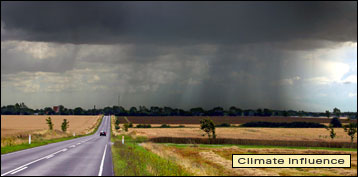



Top 10 influences
on world cuisines
Food tips you can trust

Top 10
influences on
world cuisines
 Climate,
Climate,
geography,
and geology
Certain crops demand heavy rains, or sandy soil, or hot summers, or whatever. These variables determine which foods grow best and therefore which cooking ingredients will be economically available to the home cook. Example: People in rainy southern India eat substantially more rice than wheat. Those in relatively drier northern India do the opposite.
 Seasonal
Seasonal
food shortages
in world cuisines
Example: Lands with frigid winters need to preserve foods and incorporate them into their cold season diets. Finland and North Korea are in this category.
 Religion
Religion
and custom
Certain foods or combinations of foods in many world cuisines are forbidden by religion or deplored by custom. For instance, devote and Muslims and Orthodox Jews may not eat pork.
 Wars
Wars
World cuisines are altered by invasions and other martial actions. Initially, there is an aversion to the enemy's food. Eventually, assimilation occurs.
 Technology
Technology
I've observed many times in my travels the obvious but telling difference in the agricultural results between a farmer using an animal-pulled plow and a modern tractor. Production is almost always more efficient and consumer prices are lower, but usually at the expense of food quality.
Learn More
 for influences #6 to #10
for influences #6 to #10
 for Top 10 world cuisine rankings
for Top 10 world cuisine rankings
Photo by Malene Thyssen - CC BY-SA 2.5

Rankings
Peasant recipes
World wonders
Also read
Site map
About me and my credentials
About my website
Reader testimonials
Email me your opinion



